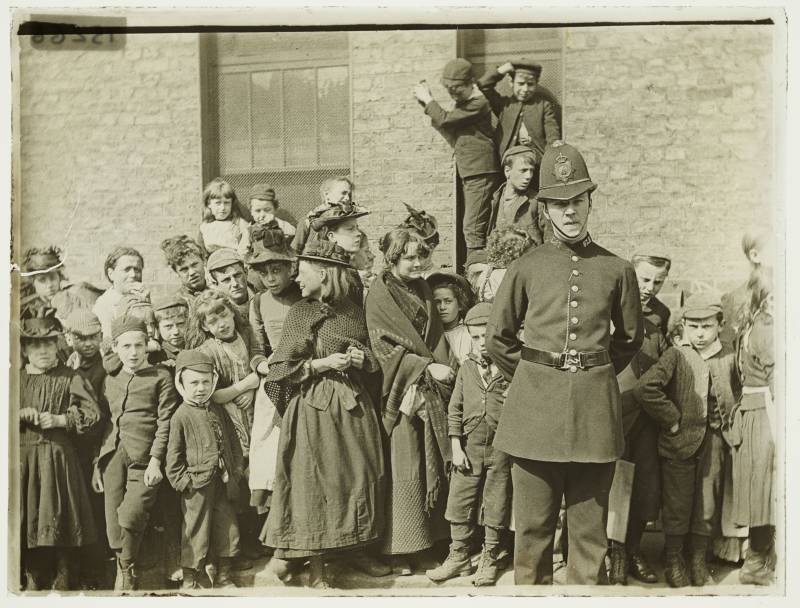“The lower portion of Stevenson St. which forms the northern boundary of that delectable precinct known as Tar Flat is prolific of the worst examples of depravity that are discovered in the city,” the San Francisco Chronicle reported. “The children are permitted to run wild, the only discipline to which they are subjected being punctuality in the conveyance of beer and whisky from the corner grocery.”
Avery and her friends might have gotten away with their burglaries were it not for the cockiness of one of the boys involved. After days of searching pawnshops for the stolen guns, police stumbled across the boy at Jessie and First Street, showing off “a beautifully mounted pistol.” They quickly apprehended him and took him to the city prison for questioning. Unfortunately for his co-conspirators, the boy sang like a bird and told all. When Avery’s name came up, the police weren’t even surprised. She had been arrested and sentenced to time at the industrial school in Balboa Park (a reform institution for delinquents) eight months earlier.
On that occasion, Avery and her friends’ crime had been relatively tame. She and five pals — all between the ages of 10 and 13, except for one homeless 17-year-old boy — had been found spending the night, lying in pairs, in a straw-covered loft over a blacksmith’s shop. It was how Avery behaved after her arrest, however, that got her the most notoriety.
When the children were first hauled into the police station from the blacksmith’s that night, they put on quite the show, crying and acting scared. It was after the police put the three boys in one cell and the three girls in the other that they realized just how unbothered the kids really were. The girls smoked, danced and sang at a volume loud enough to bother the whole police station. They talked “in the unintelligible slang used by criminals,” according to a report in the Chronicle. Finally, at 3am, after Avery started loudly propositioning one of the boys in an adjoining cell, she was removed from her friends and put in a separate cell of her own. Only then did the children lie down and go to sleep. Only then did the police discover that Avery was concealing a knife in her skirt.


